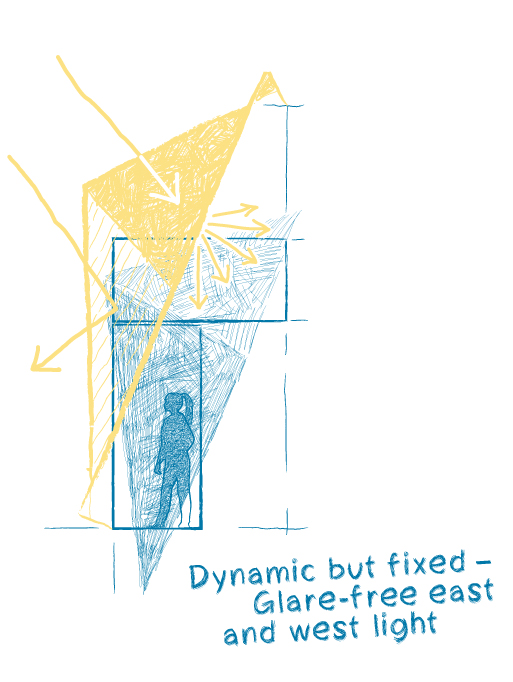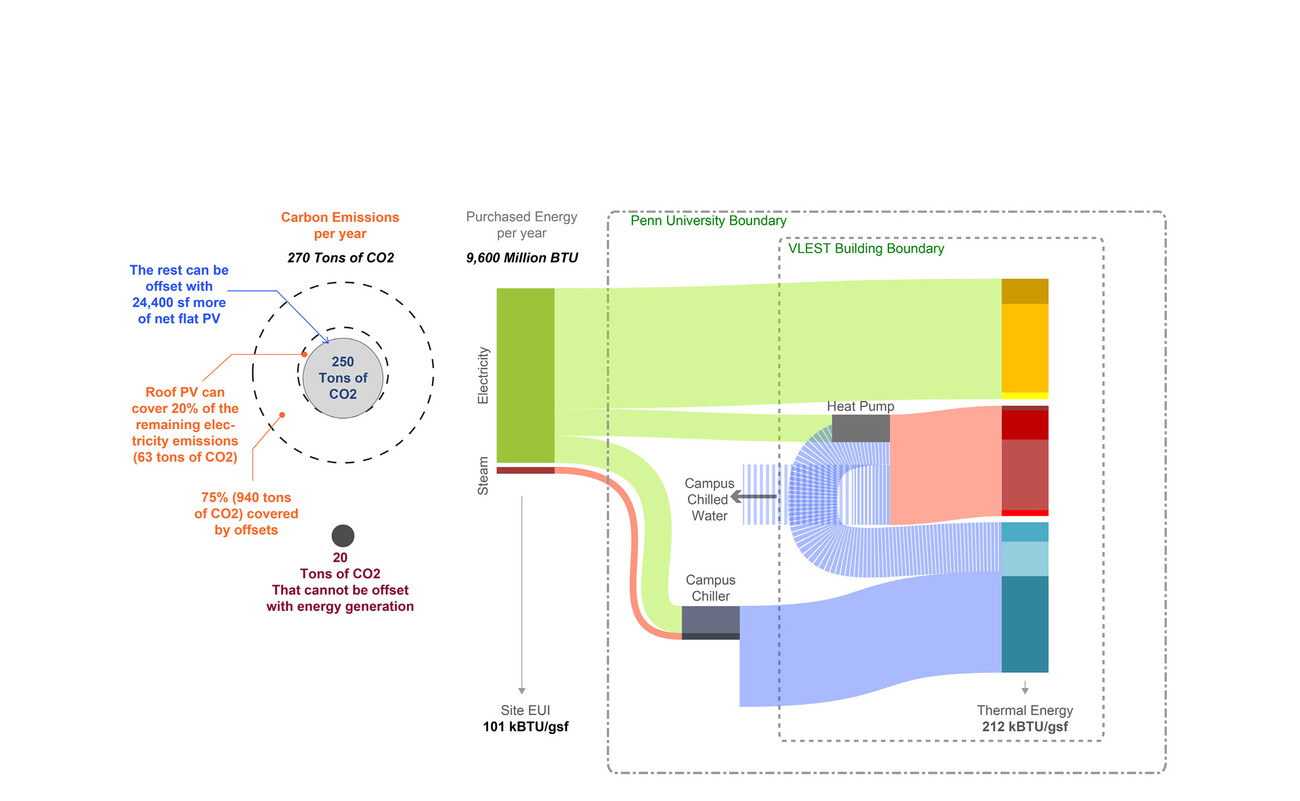Vagelos Laboratory for Energy Science and Technology, Philadelphia, PA, USA


The Vagelos Laboratory for Energy Science and Technology (VLEST) is the newest laboratory building at the University of Pennsylvania. This new $173 million facility houses existing and emerging energy research programs with state-of-the-art laboratory space. The new VLEST is a testament to Penn’s leadership and innovation for a sustainable future, acting as a demonstration of the very research it serves by including energy efficiency and sustainability concepts aligned to Penn’s University Climate Action Plan. High-quality indoor and outdoor environments are meant to attract faculty and students and maximize learning potential, research productivity, and interdisciplinary collaboration.
Transsolar worked to integrate sustainability in the design, not only as a technical engineering exercise but as the result of deep integration between architectural design and engineering systems. The resulting design emphasizes passive low-energy design strategies supported by sophisticated technical equipment.
The most prominent and innovative feature is the exterior shading screen, dubbed the ‘solar sails’ by the university. The north-south oriented site makes it unavoidable that the major facades face east and west, which are typically the most difficult to shade. Behnisch and Transsolar wanted to learn from and improve on past collaborations by designing a façade meeting many goals: (1) great daylight, (2) minimizing need for interior shades for glare control, (3) limit solar heat gain to allow radiant cooling to be effective, and (4) use only fixed exterior shading. Transsolar proposed a fixed screen with a light-diffusing upper portion for daylight, a more aggressive lower portion for solar control, and geometry angled toward the south.
Behnisch and Transsolar then worked through many iterations of design solutions based on this proposal, ultimately arriving at the single-membrane ETFE screen. The upper portion of the ETFE is light-diffusing while the lower portion is heavily fritted for solar control, while the entire geometry twists toward the south, providing solar control while maintaining views out. Transsolar performed extensive iterative simulations of daylight and solar heat gain, and performed physical testing of the light diffusion properties of different material choices. The final design is a high-performance screen that also creates a new icon for the northern edge of Penn’s campus, which neither Behnisch or Transsolar would have arrived at individually.
Transsolar’s work also emphasized beyond the state-of-the-art laboratory efficiency applying minimized ventilation rates, an exceptional runaround energy recovery system, best practice fume hood performance and operation, and the use of a heat pump chiller to provide nearly 100% of heating energy via electricity – a first for the University of Pennsylvania and a step toward meeting their carbon neutrality targets. Exceptional user comfort and controllability goes beyond the daylight strategy with triple glazing for winter comfort and by allowing natural ventilation in all non-lab spaces. The project is LEED Platinum certified and has predicted EUI of 137 kBtu/sf (electricity + thermal heating and cooling).
Timelapse Video >
Transsolar News - VLEST at UPenn in the Spotlight >
2025 Vitruvian Honors & Awards - Facade System Integration category
2025 LEED-NCv4 PLATINUM certification







